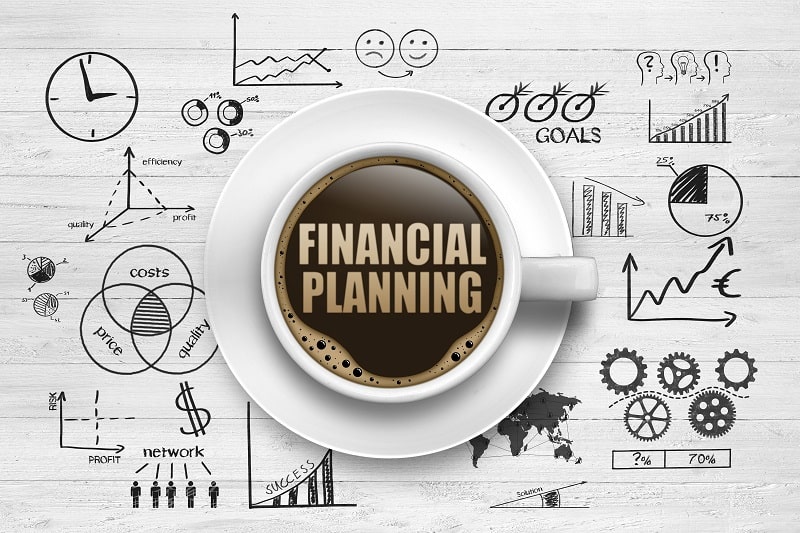Food prices on the rise, Gas prices through the roof, inflation, recession, and all the uncertainty that comes with it. You may feel late to the party but now is the time to start figuring out how to plan your financial security.
We have all been in your shoes, a great plan, then a great tragedy throws you off your tracks. Write it down and take control of your finances rather than let them run away from you.
Once you get a few dollars in your savings, you will be amazed at how your days and weeks become filled with anticipation of growing your savings versus worrying about your debt.
While it’s always easier said than done, these six tips and recommendations offer straightforward guidance and a place to start on your journey to financial stability.
1. Pay yourself first: savings and retirement
Everyone knows that they’re supposed to put money aside for savings, but just what kind of account is the best choice? The answer is simple: any high-yield savings account is, generally, a good idea. Different banks will offer different interest rates, but higher returns typically come with higher minimum deposits to open an account.
Another type of savings account that often seems to be overlooked is the Individual Retirement Account, or IRA. No matter how young you are, it’s never too soon to start thinking about retirement, and an IRA helps individuals save for the future outside of their employment-based retirement options like a 401(k). An IRA is a particularly good choice for someone whose employer does not offer to match their contribution. While there are multiple types of IRAs, all are beneficial because they are tax-advantaged. This means they are either tax-deferred, tax-reduced, or exempt from taxation altogether.
2. Save wherever you can: coupons and promo codes
Remember those days when we would go through the weekly paper and cut out coupons for the grocery store to pinch a few pennies? Now, though many of us still make our weekly grocery trip in person with clippings full of savings, technology has allowed us to grow accustomed to the virtual shopping experience. In fact, over two billion people purchased goods or services online in the year 2020.
For those of us who thoroughly enjoy the option to buy anything and everything without leaving the comfort of our homes, digital coupons and promo codes are our new best friends. With the browser extension called Honey, applying these coupons is as simple as one click at checkout. Once installed, the software searches the internet for any available coupons and promo codes for you, and applies those to your cart that save you the most money.
3. What you save, reinvest
As you begin to save a few dollars and cents here and there, find a place to put your spare change–and let it grow while you’re at it. With the app Acorns, your return on investment increases with every purchase you make. Acorns, and similar micro- and robo-investing apps operate by rounding up your purchases to the nearest whole dollar and investing those extra cents in the stock market based on investing plans created by expert financial advisors to suit your specific needs. Before you know it, you will have a portfolio full of shares that prove to be incredible long-term investments.
4. Ditch what you don’t need: unsubscribing en masse
Though we all love our subscriptions to Netflix and Amazon Prime, there are probably a few subscription services you pay for each month that you use far less frequently. Since we know it’s much easier to say “just unsubscribe” than it actually is to go through multiple calls and emails to customer service representatives, there is an app for that too! Truebill will [1] [2] [3] do all the heavy lifting for you by analyzing your spending habits and showing you any unused subscription services. The app also tells you where your money goes each month on other items and even has an automated savings feature similar to that of Acorns’. An alternative to Truebill is unroll.me, which also allows you to view all of your subscriptions in one place so that you can keep the ones you love and unsubscribe from the ones you don’t.
5. It’s better to be safe than sorry
At the end of the day, all of your hard work to save, invest, and prepare means nothing if you lose your progress to an unforeseen emergency. We all know just how quickly circumstances can change, especially in today’s world of COVID and economic turbulence, and having a safety net could mean the difference between getting by and hitting rock bottom. To prepare for any potential financial turmoil, it is best not to wait another day in starting your emergency fund; when you wait until a rainy day comes along, it’s already too late. Being proactive is the key to avoiding a financial crisis.
6. Make it count: stick to your plan
Now that we have covered all of our bases from saving to investing and planning for retirement, it’s time to make sure our hard work doesn’t go to waste. For accountability, it’s important to write out your personal budget so that you have something to return to in the event that you digress from your financial goals. Keeping resolutions is the hardest part, and anyway you can motivate yourself to stick to your plan is beneficial. The personal finance app Mint provides a digital platform where you can organize all of your financial information and accounts in one place. The app offers free budgeting tools, reminds you when payments are due, and even gives you personalized insights into your spending, called Mintsights. When everything you need is consolidated, it’s easier to keep tabs on your finances, and a good rule of thumb is to check your account balance everyday to keep apprised of any significant changes day-to-day.
Thinking about the bigger picture
Each of these recommendations and suggestions present a different way to save or invest, but one of the most important reasons why we do these things is to get and stay out of debt. Nationally, in the class of 2019, sixty-two percent of students graduated with student loan debt. When added to the rest of student loan borrowers, the total amount of debt surpasses $1.74 trillion. Though these statistics are startling, there are plenty of things you can do everyday to minimize both your personal and student loan debt, and maintaining your financial wellness is the best place to start in staying ahead of that curve.


